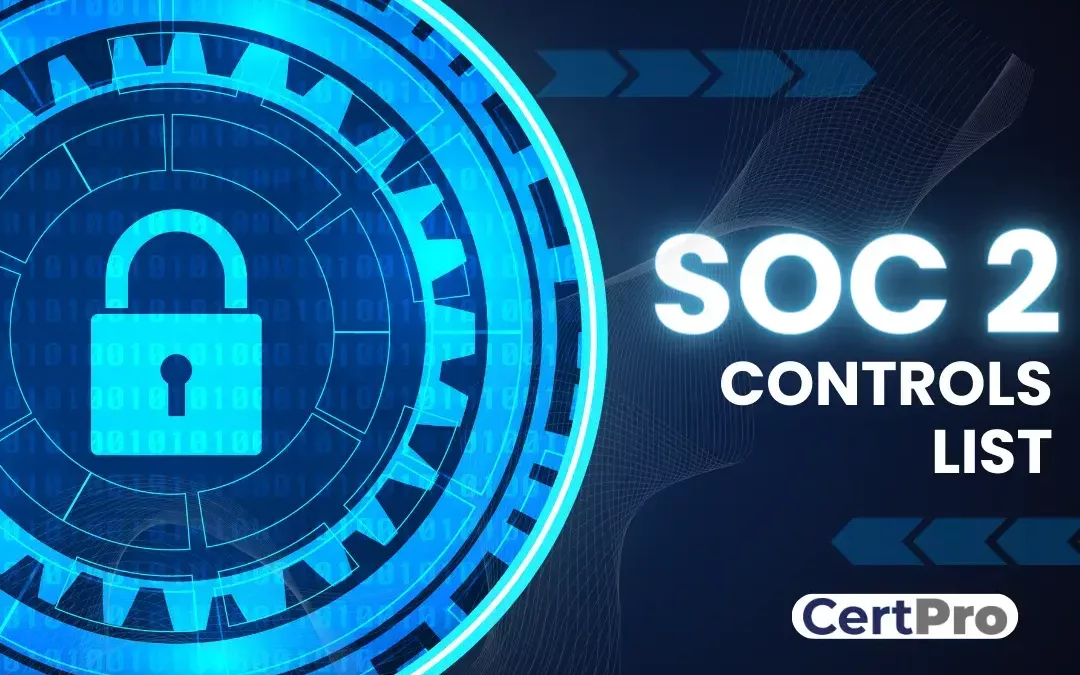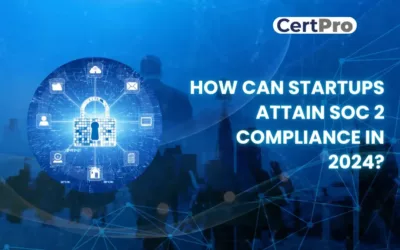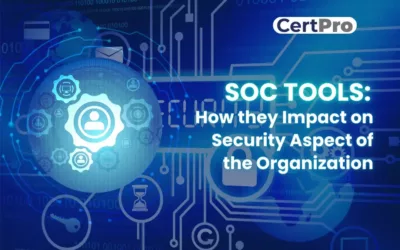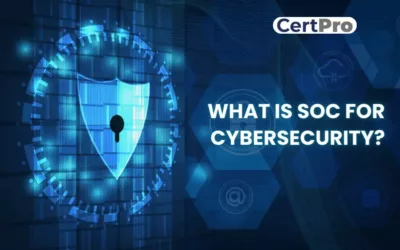The American Institute of CPAs (AICPA) created the widely used and regarded Service Organization Control 2 (SOC 2) framework to assess the security, availability, processing integrity, confidentiality, and privacy of service organizations. The SOC 2 Controls list encompasses a comprehensive set of measures and practices that service organizations adopt to comply with the Trust Services Criteria (TSC).
This article aims to introduce readers to the world of SOC 2 controls, highlight their significance, and explain how they contribute to enhancing data security. By doing this, service providers show their dedication to safeguarding sensitive data and reassure their clients that their data is treated with the utmost security and privacy.
SOC 2 AND ITS PURPOSE
The American Institute of CPAs (AICPA) produced the widely used auditing standard known as Service Organization Control 2. It offers a structure for evaluating and summarizing the internal controls of service firms that deal with sensitive customer data or deliver essential services. Independent auditors who produce SOC 2 reports provide insightful information about these companies’ security, availability, processing integrity, confidentiality, and privacy processes.
The primary goal is to provide assurance to clients, stakeholders, and regulators that service organizations have established effective internal controls to protect customer data and ensure the confidentiality and security of their operations. The purpose of SOC 2 is to provide independent assurance and validation regarding the effectiveness of a service organization’s internal controls related to security, availability, processing integrity, confidentiality, and privacy.
The key purposes of SOC 2 are as follows:
1. Data Security and Privacy Assurance: It evaluates the organization’s controls to ensure that customer data is protected against unauthorized access, data breaches, and privacy violations.
2. Risk Management and Mitigation: It helps service organizations identify and mitigate risks related to data security, system availability, and processing integrity.
3. Transparency and Accountability: SOC 2 reports offer transparency and accountability to clients, stakeholders, and regulators. The reports provide an independent assessment of the organization’s controls and practices, enhancing trust and confidence in the service provider.
4. Competitive Advantage: SOC 2 compliance can be a competitive differentiator in the market. It sets service organizations apart from competitors, showcasing their commitment to data security and privacy.
5. Compliance with Industry Standards: It aligns with industry-specific regulations and frameworks, such as HIPAA, GDPR, and ISO 27001. By achieving SOC 2 compliance, organizations demonstrate adherence to industry best practices.
SOC 2 CONTROLS AND ITS BENEFITS
It offers numerous benefits for service organizations, their clients, and their stakeholders. By implementing these controls and obtaining SOC 2 compliance, organizations can strengthen their data security practices and build trust with their customers.
The key benefits are:
1. Regulatory Compliance: It aligns with many industry-specific regulations, such as HIPAA (Health Insurance Portability and Accountability Act) and GDPR (General Data Protection Regulation). Complying with SOC 2 requirements can help service organizations meet these regulatory obligations more effectively.
2. Transparency and Accountability: SOC 2 reports provide transparency and accountability to clients and stakeholders. These reports demonstrate the organization’s commitment to security, privacy, and operational excellence.
3. Cost Savings: Implementing SOC 2 controls can lead to cost savings in the long run. Preventing data breaches and security incidents reduces the financial impact associated with such incidents, including legal costs, regulatory fines, and reputational damage.
4. Competitive Advantage: SOC 2 compliance can be a competitive differentiator in the market. It sets service organizations apart from competitors, as clients often prioritize working with providers who can demonstrate a strong commitment to data security and privacy.
5. Risk Management: It helps identify and mitigate risks related to data security and privacy. Implementing robust controls reduces the likelihood of data breaches and other security incidents, minimizing potential damages and liabilities.
It provides tangible benefits to service organizations, offering them a competitive edge, enhanced customer trust, and improved risk management.
LISTS OF SOC 2 CONTROL
The SOC 2 control list includes various areas:
1. Access Management Controls: It involves procedures and practices to control user access, authentication, and authorization. This includes user account provisioning, role-based access controls (RBAC), strong password policies, multi-factor authentication (MFA), and regular access reviews.
2. Physical Security Controls: These controls focus on safeguarding physical access to facilities and data centers. This may include restricted entry with key cards or biometrics, video surveillance, visitor logs, and environmental controls to monitor factors like temperature and humidity.
3. Network Security Controls: These measures are implemented to protect the organization’s network infrastructure from unauthorized access and cyber threats. This includes firewalls, intrusion detection and prevention systems (IDPS), network segmentation, and regular vulnerability assessments.
4. Data Security Controls: These are essential for sensitive information. Encryption of data at rest and in transit, data classification, data loss prevention (DLP) mechanisms, and data backup and disaster recovery plans fall under this category.
5. Incident Response and Monitoring: It involves having a plan in place to address security incidents effectively. This includes designated personnel, communication channels, and a Security Information and Event Management (SIEM) system for real-time monitoring.
6. Physical and Environmental controls It includes restricting physical access to critical infrastructure and monitoring environmental conditions to ensure the proper functioning of data centers.
7. Employee Security Awareness: These controls focus on providing security training to all employees to educate them on potential threats and promote a security-conscious culture within the organization.
By implementing SOC 2 controls and obtaining SOC 2 compliance, service organizations demonstrate their commitment to data security, privacy, and integrity. SOC 2 compliance provides valuable assurance to clients, building trust and confidence in the service provider.
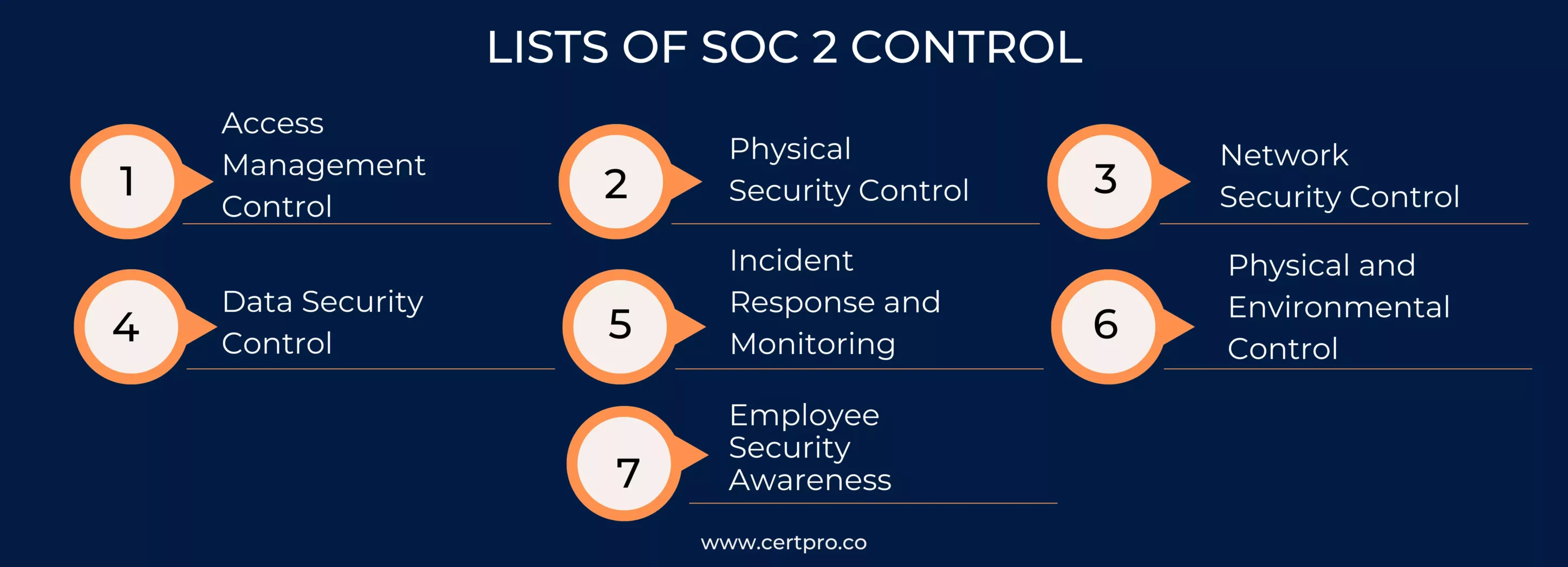
WHAT IS TSC?
The TSC encompasses five key principles that service organizations are assessed against to demonstrate their adherence to best practices in data security, availability, processing integrity, confidentiality, and privacy.
These principles are as follows:
1. Security: The organization’s system and data are protected against unauthorized access, both physical and logical.
2. Availability: The system is available for operation and use as agreed upon, ensuring maximum uptime and minimal downtime.
3. Processing Integrity: To maintain data integrity and reliability, system processing must be comprehensive, accurate, timely, and authorized.
4. Confidentiality: Information designated as confidential is protected as agreed upon, preventing unauthorized disclosure.
5. Privacy: Personal information is collected, used, retained, and disclosed in accordance with the organization’s privacy notice and relevant privacy laws and regulations.
The TSC principles are used as a benchmark to assess the design and operating effectiveness of the controls implemented by service organizations.
SOC 2 CONTROLS FOR SECURITY
There are some of the key SOC 2 controls for security:
1. Network Security: Protect the network infrastructure with firewalls, intrusion detection and prevention systems (IDPS), and encryption for data transmitted over networks.
2. System Monitoring and Logging: Employ real-time monitoring and logging to detect and respond to security incidents promptly.
3. Data Encryption: Encrypt sensitive data at rest and in transit to protect it from unauthorized access.
4. Malware Protection: Deploy antivirus and anti-malware solutions to detect and prevent malicious software.
5. Patch Management: Regularly apply security patches and updates to systems and software to address known vulnerabilities.
By implementing these SOC 2 security controls, service organizations can demonstrate their commitment to protecting customer data and maintaining a secure environment. This comprehensive set of controls provides a framework for evaluating the effectiveness of an organization’s internal controls and safeguards, giving clients and stakeholders confidence that their data is being handled securely.
Organizations may prove their dedication to upholding a strong security posture and compliance with industry requirements by using the SOC 2 control list. Companies may improve their reputation, acquire a competitive edge, and increase customer and partner trust by going through a SOC 2 audit and following the control standards.
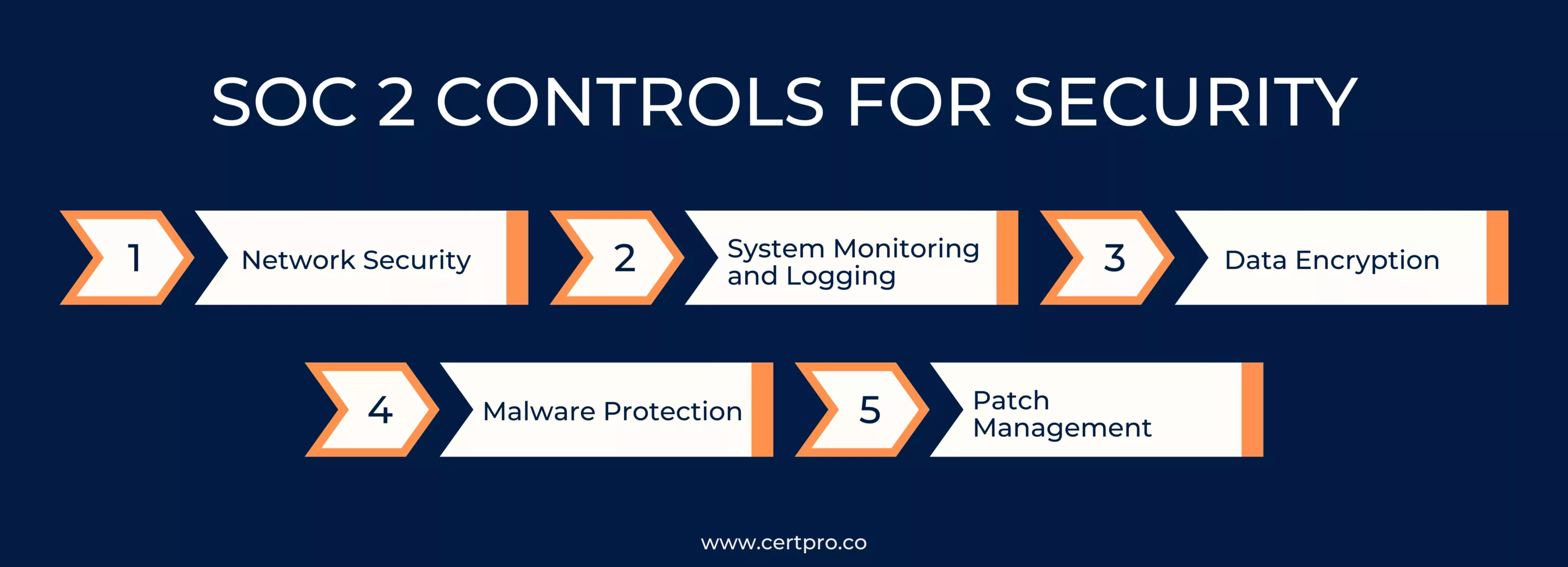
FAQ
WHAT IS THE SOC 2 CONTROLS LIST?
WHY IS SOC2 COMPLIANCE IMPORTANT?
HOW ARE SOC 2 CONTROLS ASSESSED?
HOW CAN ORGANIZATIONS PREPARE FOR SOC 2 COMPLIANCE ?
WHAT BENEFITS DO SOC 2 CONTROLS OFFER?

About the Author
GANESH S
Ganesh S, an expert in writing content on compliance, auditing, and cybersecurity, holds a Bachelor of Arts (BA) in Journalism and Mass Communication. With a keen eye for detail and a knack for clear communication, Ganesh excels in producing informative and engaging content in the fields of compliance, auditing, and cybersecurity, with particular expertise in ISO 27001, GDPR, SOC 2, HIPAA, and CE Mark.
HOW CAN STARTUPS ATTAIN SOC 2 COMPLIANCE IN 2024?
Trust is crucial for startups to do well in today's digital world. It's vital for establishing credibility with clients, especially in a data-driven environment where privacy is the main component. Therefore, getting a SOC 2 compliance report is crucial to building...
SOC TOOLS: How They Impact On Security Aspect Of The Organization
The changing cybersecurity landscape increases the importance of Security Operations Center (SOC) tools. Hence, it is essential for strengthening digital defenses and protecting against cyberattacks. SOC tools help security teams detect, monitor, and prevent security...
WHAT IS SOC FOR CYBERSECURITY?
In today's fast-paced digital landscape, ensuring robust cybersecurity measures is imperative for organizations aiming to protect sensitive data and maintain stakeholder trust. The American Institute of CPAs (AICPA) crafted the SOC for cybersecurity reporting...

